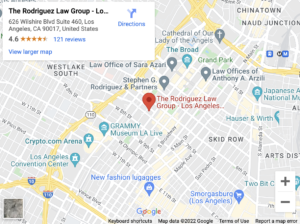California Abandons Money Bail In Favor of Risk Assessment
California will soon become the first state in the country to abandon its money bail system. Instead of assigning bail after arrest, a court will determine if a defendant should be detained based on their perceived threat to society.
In theory, this should help to minimize racial bias in California’s criminal justice system.
What is the California Money Bail Reform Act?
The California Money Bail Reform Act, or SB 10, was signed into law by Governor Jerry Brown on August 28, 2018. When the law becomes effective in October 2019, California will abandon its money bail system.
Bail is a form of punishment that occurs before an individual has ever been convicted of a crime.
The Money Bail System
Under the current bail system, courts (a) determine whether bail is necessary and (b) calculate an appropriate amount.
If a defendant can post bail, either using cash or the assistance of a bail bondsman, they will be released from jail. If a defendant cannot post bail, they will be detained until all criminal proceedings against them have been completed.
Those defendants will only be free again if they are acquitted or negotiate a plea that doesn’t involve jail time.
The New Reform System
Under the new system, California courts will not use money bail, at all. Instead, courts will determine whether a defendant should be detained based on his or her perceived threat to society.
The threat will be assessed by court employees and/or private companies contracted to provide the service. Defendants will be classified as:
- Low Risk
- Moderate Risk, or
- High Risk.
Factors that may go into deciding which classification is most appropriate for each defendant could include:
- Whether the defendant was arrested for a violent or non-violent crime
- The defendant’s record of criminal behavior
- The extent of any injuries sustained by victims
- The defendant’s demeanor and behavior during the assessment, and
- Perceived safety issues if the defendant were to be released.
Defendants categorized as “low-risk” and “moderate-risk” have the best chance of being released after their arrest. These defendants will likely have been arrested for low-level offenses and have little-to-no history with the criminal court.
Defendants categorized as “high-risk” are most likely to be detained until all criminal proceedings have been resolved.
These defendants are most likely to have been arrested for violent crimes and/or have an extensive criminal record.
Why Did California Abandon Money Bail?
California is the first state in the country to move away from the money bail system. According to state officials, the reason for the shift is to minimize racial bias in the criminal justice system.
It is no secret that minority defendants are much more likely to be penalized by the bail system than white defendants. Research shows that black defendants are not only assigned bail more often than white defendants, but that bail amounts tend to be greater, as well.
One study found that black defendants receive bail amounts that are $9,923 greater than white defendants. By getting rid of money bail, California hopes that minorities are treated more fairly throughout criminal proceedings.
Will Getting Rid of Money Bail Help Minority Defendants?
Getting rid of the money bail system is an important first step in achieving racial justice in the criminal justice system. However, California’s Money Bail Reform Act doesn’t really go far enough to ensure that all defendants are treated equally.
There is still a very real threat that non-white defendants will still be jailed more often than non-white defendants.
Defendants will all be screened after arrest to determine their threat to society. There are no standards in place under the new law to ensure that racial bias and discrimination do not play a role in this screening process.
Racial bias can impact this risk-assessment from the very start. Black defendants are more likely than white defendants to be:
- Stopped and interrogated by police
- Subjected to police force
- Arrested for a drug crime
- Charged with a serious offense, and
- Convicted and incarcerated.
If non-white defendants are more likely to be charged with a more serious crime, their chances of being categorized as “high-risk” increase. Black defendants are also more likely to have a criminal record. This can also be a factor when determining a defendant’s threat to society.
Until California can ensure that racial bias will not exist in the new risk-assessment process, minority defendants are still probably more likely to be jailed after an arrest that non-white defendants.
This does not solve the issue that was rampant in the money bail system. California needs to address racial bias in law enforcement and impose racially-neutral guidelines for the risk-assessment process.
To learn more, call our Los Angeles criminal defense law firm at 213-995-6767 or visit our contact us page to send us an email.


